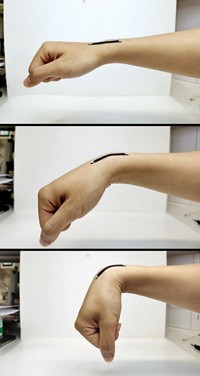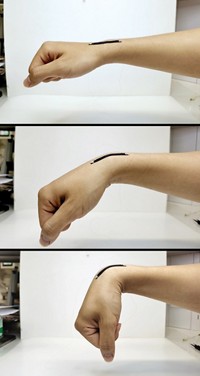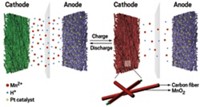Advertisement
Grab your lab coat. Let's get started
Welcome!
Welcome!
Create an account below to get 6 C&EN articles per month, receive newsletters and more - all free.
It seems this is your first time logging in online. Please enter the following information to continue.
As an ACS member you automatically get access to this site. All we need is few more details to create your reading experience.
Not you? Sign in with a different account.
Not you? Sign in with a different account.
ERROR 1
ERROR 1
ERROR 2
ERROR 2
ERROR 2
ERROR 2
ERROR 2
Password and Confirm password must match.
If you have an ACS member number, please enter it here so we can link this account to your membership. (optional)
ERROR 2
ACS values your privacy. By submitting your information, you are gaining access to C&EN and subscribing to our weekly newsletter. We use the information you provide to make your reading experience better, and we will never sell your data to third party members.
Energy Storage
Implantable batteries run on oxygen in the body
Proof-of-concept device points at using the body’s oxygen and sodium to power medical implants
by Prachi Patel
March 29, 2024

Replacing waning batteries in implantable medical devices usually means invasive surgery. A new battery designed to run on the body’s oxygen and tested in rats hints at a way to power medical sensors and simulators for much longer than is possible with existing batteries (Chem 2024, DOI: 10.1016/j.chempr.2024.02.012).
Batteries are the best option available today for powering implantable electronics. But they have limited lifetimes. So researchers have been trying to develop devices that generate power via chemical reactions with glucose or enzymes found in the body.
Xizheng Liu of Tianjin University of Technology, Pingli Wu of Hebei University, Yonggang Wang of Fudan University, and colleagues decided to use the body’s oxygen as a continuous energy source in a metal-oxygen battery. Metal-oxygen batterieshave theoretical energy densities 5–10 times greater than the lithium-based implantable batteries used today, Liu says.
The soft, flexible battery has an anode made of a sodium-gallium-tin alloy and a nanoporous gold cathode. The researchers packaged the device in a porous polymer case that protects the battery components while allowing contact with body fluids. Sodium at the anode undergoes oxidation during discharge, providing electrons for electric current and sodium ions that move to the cathode. At the cathode, oxygen from body fluids undergoes reduction to form water and hydrogen peroxide.
Implanted under the skin of rats, the device operated for about 4 weeks, producing 1.3 V with a maximum power density of 2.6 µW/cm2. That energy density is too low for devices now, Liu says, and the service life of the battery depends on the amount of sodium at the anode. But the concept shows that it’s possible to produce power by harnessing sodium ions and oxygen in the body.
Amay Bandodkar, an electrical and computer engineering professor at North Carolina State University, says the unique, biocompatible battery is promising for implantable electronics. “It would be interesting if an advanced biodegradable version of this battery could be made.”





Join the conversation
Contact the reporter
Submit a Letter to the Editor for publication
Engage with us on Twitter